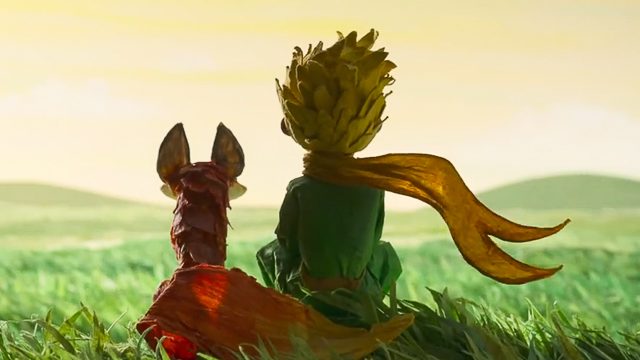SUMMARY
This is AI generated summarization, which may have errors. For context, always refer to the full article.

Mark Osborne’s The Little Prince isn’t so much an adaptation of the beloved novel of the same title by Antoine de Saint-Exupery as it is an original work, one that relies heavily on the popular fable to tell a not-so-original tale of a little girl (Mackenzie Foy) who discovers the profound virtues of childhood in a world ruled by monotonous adults.
From book to film
In a way, the film purposely restrains Saint-Exupery’s work to be only pertinent to the predictable lessons that the film attempts to impart. The film’s clever but narrow-minded appropriation of the novel’s sparse but thorough narrative somewhat minimizes the legacy and impact of the book throughout the years, favoring relatable contemporary concerns over the more universal and enduring truths in the book.
It is all good. The film telegraphs its prosaic principles with assured ease. It introduces the little girl as alarmingly comfortable living in a world of humorously joyless patterns that adults have created for workday comfort.

An initial rejection forces the girl and her busy mom (Rachel McAdams) to relocate to a neighborhood where she is befriended by a peculiar old man (Jeff Bridges) who has been itching to fly his decrepit plane out of his backyard.
The old man turns out to be the Narrator in Saint-Exupery’s book, and he entices the little girl out of her pre-planned life with precious illustrated pages of his interaction with a strange prince from outer space (Riley Osborne) who famously recounted his thoughtful adventure from his minuscule asteroid up to the Sahara desert.

Unsurprisingly, the little girl finds relevance in the tale enough to lead her through a journey of self-discovery that would involve all the characters of the book in situations that are outside the scope of Saint-Exupery’s creation.
Old and new
Osborne earnestly mixes the old with the new.
Sprinkled within the tale of the little girl and this friend are the snippets of Saint-Exupery’s novel. The portions of the film that are straight out of the novel resonate deeper, perhaps because the parable-like narrative leaves so much for the imagination to mold.

They are rendered in a visual style, similar to paper-crafted puppets moving against lush backgrounds, that is starkly different from the rest of the film’s more generic look.

It is perhaps this oddly fascinating weaving of seemingly disparate elements that is both praiseworthy and problematic about the film. There is something noteworthy about how the film attempted to bridge the years that have passed ever since the novel was released in 1943, how it made use of a very familiar story to put a contemporary perspective in the timeless musings of the author.
Unfortunately, the contemporary spin is a tad flat, which forces Osborne to adorn it with cute but trivial details just to connect the dots. It’s all very charming at first, except that it boxes the novel inside an interpretation that is frustratingly mundane and sentimental.

To make matters worse, the film’s expansion of the story of the characters of the novel is severely mawkish. As Osborne imagines a continuation of the tale of the little prince from when he bade farewell to the marooned aviator, the film completely abandons the nebulous magic that has already been weaved by the novel for convenient melodrama.
Still worth it
The biggest problem of The Little Prince is that it is very restrictive. By boxing Saint-Exupery’s wonderful work inside a middling tale that relegates the novel’s extensive charms within a very specific context, the film wastes away an opportunity to fully explore the potential of visually exploring the obscure textures of such an indelible work of literature.


That said, Osborne still manages to come up with an absorbing piece of entertainment out of something that may feel too short and ambiguous for a film made for children. Sure, it seems like Osborne’s preferences lean towards convention, but at least there is still enough of The Little Prince of our collective childhood to keep the film from failing entirely. – Rappler.com

Francis Joseph Cruz litigates for a living and writes about cinema for fun. The first Filipino movie he saw in the theaters was Carlo J. Caparas’ ‘Tirad Pass.’ Since then, he’s been on a mission to find better memories with Philippine cinema. Profile photo by Fatcat Studios
Add a comment
How does this make you feel?
There are no comments yet. Add your comment to start the conversation.